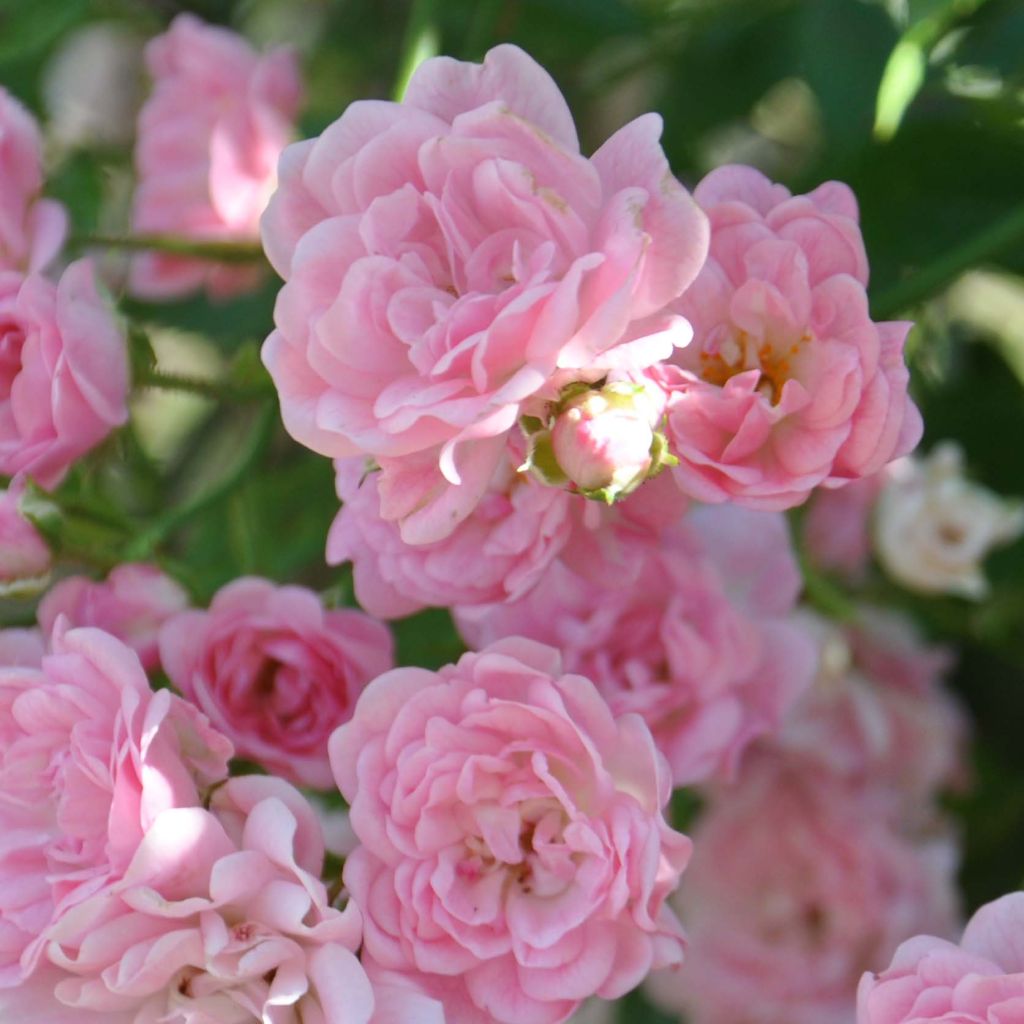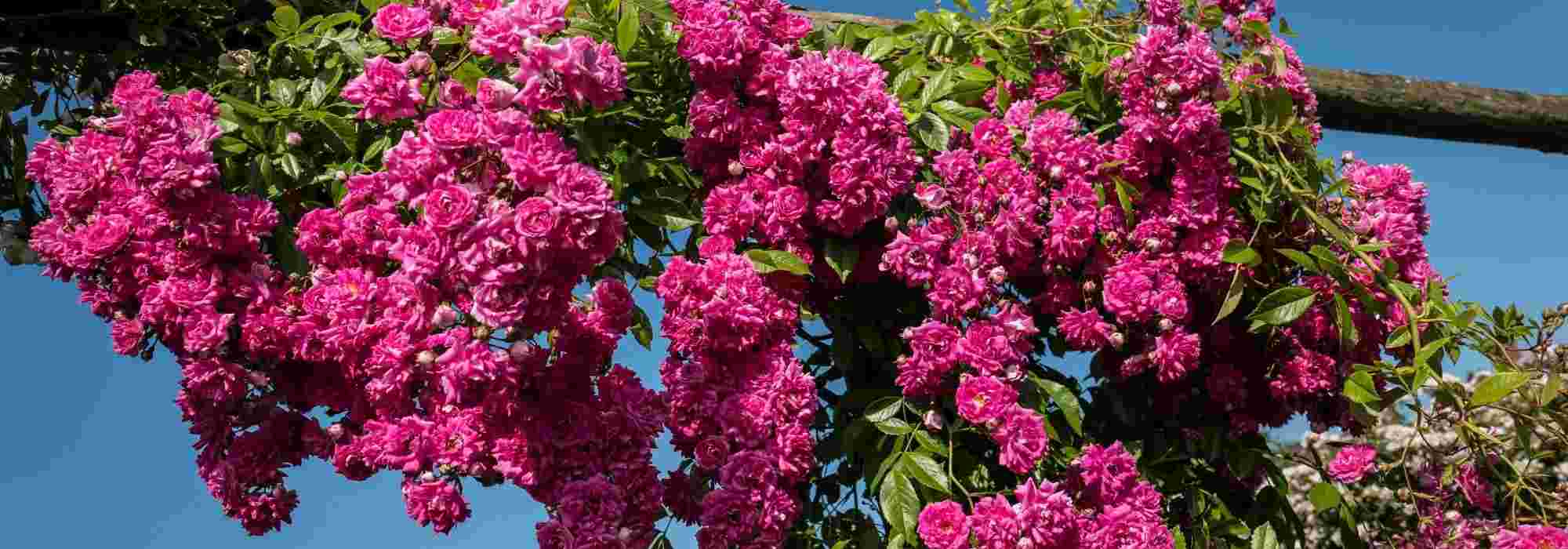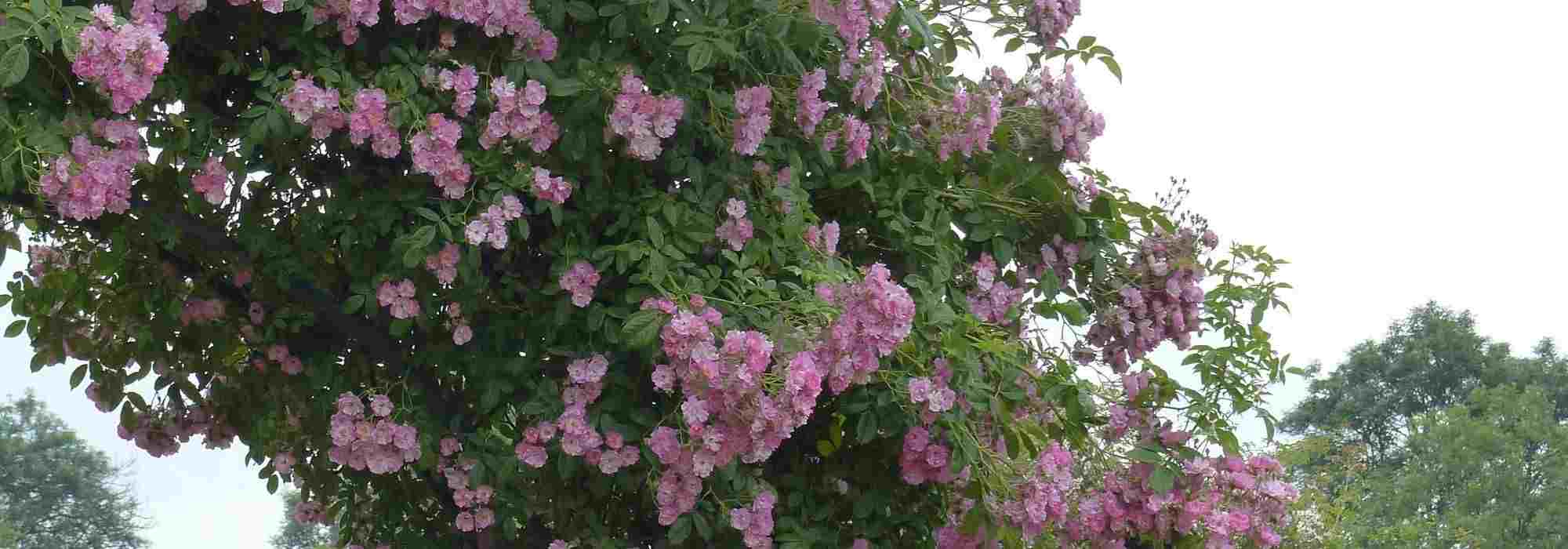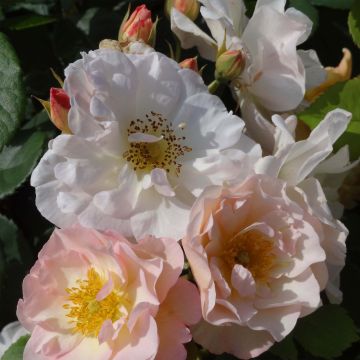

Rosa banksiae Rosea - Rambling Rose


Rosa banksiae Rosea - Rambling Rose
View more pictures
Hide images

Thierry P.

Flowering in May - image 3
Thierry P. • 84 FR
Rosa banksiae Rosea - Rambling Rose
Rosa banksiae Rosea
Banksian rose
Disappointed, I believe I ordered a Banks rose and received a yellow one. I am very disappointed.
Patricia , 20/12/2025
Special offer!
Receive a €20 voucher for any order over €90 (excluding delivery costs, credit notes, and plastic-free options)!
1- Add your favorite plants to your cart.
2- Once you have reached €90, confirm your order (you can even choose the delivery date!).
3- As soon as your order is shipped, you will receive an email containing your voucher code, valid for 3 months (90 days).
Your voucher is unique and can only be used once, for any order with a minimum value of €20, excluding delivery costs.
Can be combined with other current offers, non-divisible and non-refundable.
We guarantee the quality of our plants for a full growing cycle, and will replace at our expense any plant that fails to recover under normal climatic and planting conditions.
Description
The Banksiae Rosea, also known as Rosa Banksiae Rosea, is a vigorous, rambling rose with long, flexible stems and almost no thorns, often retaining its foliage in winter. It blooms very early, in April-May, and abundantly, in clusters of small double flowers ranging from bright to pale pink, very colourful. Its only weakness is its lack of hardiness in cold climates. However, it can be grown in cooler climates if sheltered by a wall in a sunny position. It will withstand dry summers without flinching in warmer conditions and can reach impressive dimensions, even in limestone soil.
Due to its obscure origins, the Rosier de Banks Rosea has sparked many controversies among rose enthusiasts, collectors, botanists, and probably hybrids. Rosa banksia is a botanical species native to dry, mountainous subtropical regions in central and western China, where it grows at altitudes between 500 and 2200 meters (1640 and 7218 feet). This vigorous climbing rose, therefore, thrives in hot climates, even dry ones in summer. Its species name, banksiae, is dedicated to Lady Banks, the wife of the famous botanist Sir Joseph Banks, who brought it back from his expeditions in China, along with new chrysanthemums and many other plants still unknown in Europe. There are only two subspecies of this rose and very few hybrids, as the plant is quite resistant to cross-breeding. Our 'Rosea' rose probably belongs among these rarities.
It is slightly smaller than the 'Lutea' Banks rose, with its long stems rarely exceeding 10m (33ft) in height. Its spread on the ground reaches about 3m (10ft). The new shoots have a few prickles on the rachis, the extension of the petiole on which the rose leaflets attach. The leaves, divided into three to five, rarely seven leaflets with finely toothed edges, are glossy and medium green. They measure 4 to 6cm (2in) long and often turn red in autumn. The foliage can be susceptible to rose diseases, varying in intensity depending on the growing conditions and humidity. Aphids, on the other hand, ignore it.
Flowering occurs from April to May, lasting 3 to 5 weeks, depending on the climate, on the current year's stems and shoots. The 3cm (1in) wide double flowers are densely clustered. Their colour is a mix of shades of pink, from candy pink to pale pink, veined with white pink, and their very light fragrance somewhat resembles that of violets. When fully open, they reveal a heart of yellow stamens. Flowering lasts 3 to 5 weeks, depending on weather conditions. The formation of small red fruits follows it. This rose, which grows on its roots, tolerates the presence of limestone in the soil and is perfectly drought-tolerant once well-established. As it ages, its trunk takes on a fibrous appearance, with caramel to reddish-brown shades and peels off. Its lifespan is remarkable: many specimens exceed 100 years in old gardens.
A well-established Rosier de Banks Rosea is hardy down to -10/-12 °C (14/10.4°F) in healthy, well-drained soil, which still allows it to be grown in many regions. Like 'Lutea' and 'Alba Plena', it likes to surprise, invade trees, and creep between cypress hedges, demonstrating its formidable conquering vigour. Its luxuriant growth metamorphoses and elegantly dresses a fence or a large wall from January to December in sheltered locations or mild climates. In the south, it will provide perfect shade on a large south-facing arbour. Low-maintenance, the plant requires no watering once well established. Although it is remarkably frugal and modest, it should be sheltered by a wall outside the olive tree zone and receive maximum sunlight to induce its fabulous flowering. We know of a 120-year-old specimen still faithfully blooms (sometimes as early as February) in a neglected garden near Montpellier. The Banks can be paired with a summer-flowering clematis with a flowering wall all summer. Its base can also be adorned with bulbs, ground-cover roses like The Fairy, perennials, or small shrubs with variegated grey foliage to enhance periods without roses.
Rosa banksiae Rosea - Rambling Rose in pictures




Plant habit
Flowering
Foliage
Botanical data
Rosa
banksiae
Rosea
Rosaceae
Banksian rose
Cultivar or hybrid
Rosa canina Laxa (2L/3L pot)
Planting and care
The Banks rose is a plant that grows well in mild, warm, and dry climates, but it can also thrive in cooler regions if planted in a sunny location protected from cold winds, such as against a south-facing wall. The plant is not very particular about the type of soil it grows in as long as it is deep enough to accommodate its root system, which seeks moisture even at great depths during dry summers. It can tolerate the presence of limestone in the soil and prefers fertile, well-drained soils, even if they are clayey. This rose blooms on the current year's branches, so Pruning should be done just after flowering when the young shoots are developing to control its growth. Removing some older branches may be helpful to rejuvenate the plant. The Banks rose requires plenty of sunlight to display its stunning flowering. It can withstand temperatures down to about -10 °C (14°F) in well-drained soil, but young plants should be covered in the winter for the first 2 or 3 years in cooler climates. The foliage may be marked with white spots, a sign of mildew, or be affected by black spot. If your climate is humid, apply preventive treatment in spring and occasionally in summer. Lastly, ants may stroll along the young stems, but this does not harm the plant's health.
To propagate this rose, use softwood cuttings in summer. The young shoots root most efficiently, while cuttings from sections give more irregular results.
Training and Pruning: Shortening the shoots by 30% once or twice a year during the first few years is necessary. This helps to densify the habit, branch out the base of the plant, and limit annual growth.
Roses may develop unsightly spots at the end of summer, but this is a natural occurrence and doesn't harm the rose's growth.
Planting period
Intended location
Care
Planting & care advice
-
, onOrder confirmed
Reply from on Promesse de fleurs
Similar products
Haven't found what you were looking for?
Hardiness is the lowest winter temperature a plant can endure without suffering serious damage or even dying. However, hardiness is affected by location (a sheltered area, such as a patio), protection (winter cover) and soil type (hardiness is improved by well-drained soil).

Photo Sharing Terms & Conditions
In order to encourage gardeners to interact and share their experiences, Promesse de fleurs offers various media enabling content to be uploaded onto its Site - in particular via the ‘Photo sharing’ module.
The User agrees to refrain from:
- Posting any content that is illegal, prejudicial, insulting, racist, inciteful to hatred, revisionist, contrary to public decency, that infringes on privacy or on the privacy rights of third parties, in particular the publicity rights of persons and goods, intellectual property rights, or the right to privacy.
- Submitting content on behalf of a third party;
- Impersonate the identity of a third party and/or publish any personal information about a third party;
In general, the User undertakes to refrain from any unethical behaviour.
All Content (in particular text, comments, files, images, photos, videos, creative works, etc.), which may be subject to property or intellectual property rights, image or other private rights, shall remain the property of the User, subject to the limited rights granted by the terms of the licence granted by Promesse de fleurs as stated below. Users are at liberty to publish or not to publish such Content on the Site, notably via the ‘Photo Sharing’ facility, and accept that this Content shall be made public and freely accessible, notably on the Internet.
Users further acknowledge, undertake to have ,and guarantee that they hold all necessary rights and permissions to publish such material on the Site, in particular with regard to the legislation in force pertaining to any privacy, property, intellectual property, image, or contractual rights, or rights of any other nature. By publishing such Content on the Site, Users acknowledge accepting full liability as publishers of the Content within the meaning of the law, and grant Promesse de fleurs, free of charge, an inclusive, worldwide licence for the said Content for the entire duration of its publication, including all reproduction, representation, up/downloading, displaying, performing, transmission, and storage rights.
Users also grant permission for their name to be linked to the Content and accept that this link may not always be made available.
By engaging in posting material, Users consent to their Content becoming automatically accessible on the Internet, in particular on other sites and/or blogs and/or web pages of the Promesse de fleurs site, including in particular social pages and the Promesse de fleurs catalogue.
Users may secure the removal of entrusted content free of charge by issuing a simple request via our contact form.
The flowering period indicated on our website applies to countries and regions located in USDA zone 8 (France, the United Kingdom, Ireland, the Netherlands, etc.)
It will vary according to where you live:
- In zones 9 to 10 (Italy, Spain, Greece, etc.), flowering will occur about 2 to 4 weeks earlier.
- In zones 6 to 7 (Germany, Poland, Slovenia, and lower mountainous regions), flowering will be delayed by 2 to 3 weeks.
- In zone 5 (Central Europe, Scandinavia), blooming will be delayed by 3 to 5 weeks.
In temperate climates, pruning of spring-flowering shrubs (forsythia, spireas, etc.) should be done just after flowering.
Pruning of summer-flowering shrubs (Indian Lilac, Perovskia, etc.) can be done in winter or spring.
In cold regions as well as with frost-sensitive plants, avoid pruning too early when severe frosts may still occur.
The planting period indicated on our website applies to countries and regions located in USDA zone 8 (France, United Kingdom, Ireland, Netherlands).
It will vary according to where you live:
- In Mediterranean zones (Marseille, Madrid, Milan, etc.), autumn and winter are the best planting periods.
- In continental zones (Strasbourg, Munich, Vienna, etc.), delay planting by 2 to 3 weeks in spring and bring it forward by 2 to 4 weeks in autumn.
- In mountainous regions (the Alps, Pyrenees, Carpathians, etc.), it is best to plant in late spring (May-June) or late summer (August-September).
The harvesting period indicated on our website applies to countries and regions in USDA zone 8 (France, England, Ireland, the Netherlands).
In colder areas (Scandinavia, Poland, Austria...) fruit and vegetable harvests are likely to be delayed by 3-4 weeks.
In warmer areas (Italy, Spain, Greece, etc.), harvesting will probably take place earlier, depending on weather conditions.
The sowing periods indicated on our website apply to countries and regions within USDA Zone 8 (France, UK, Ireland, Netherlands).
In colder areas (Scandinavia, Poland, Austria...), delay any outdoor sowing by 3-4 weeks, or sow under glass.
In warmer climes (Italy, Spain, Greece, etc.), bring outdoor sowing forward by a few weeks.

















































